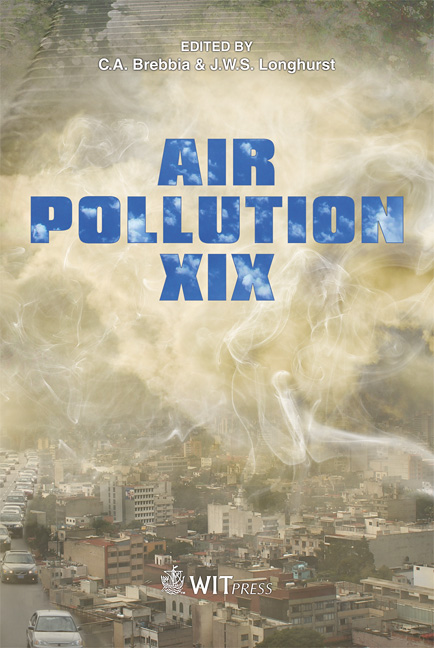Characteristics Of Aerosol Particle Size Distributions In Urban Lanzhou, North-western China
Price
Free (open access)
Transaction
Volume
147
Pages
12
Page Range
307 - 318
Published
2011
Size
621 kb
Paper DOI
10.2495/AIR110291
Copyright
WIT Press
Author(s)
Y. Yu, S. P. Zhao, D. S. Xia, J. J. He, N. Liu & J. B. Chen
Abstract
Continuous particle size data (0.5–20μm) were collected using aerodynamic particle sizer (TSI 3321) at an urban site in Lanzhou, north western China from 1st August to 31st October. Variations of particle concentrations and general characteristics of particle size distributions were analyzed. The hourly averaged particle number, surface area and volume concentration are 108.1±92.2cm-3,282.9±267.9μm2cm-3 and 92.2±127.3μg3m-3, respectively. Fine particles (0.5–2.5μm) accounted for 98.7%, 73.8% and 37.5% of the total particle number, surface area and volume concentrations in 0.5–20μm, respectively. The size distribution of number concentrations is unimodal with a maximum at 0.54–0.58μm, while that of the surface area and volume concentrations are bimodal. The main peak of surface area concentration appears near 0.63–0.67μm with a secondary peak at 3.79–4.07μm, and the main peak of volume concentration is at 4.7–5.1μm with a secondary peak near 0.67–0.72μm. K-means cluster analysis was used to group the particle volume size distributions into 7 clusters by their dominant mode and average concentration. Particle volume size distributions observed during dust storms and under dry and clear weather conditions were characterized by a single coarse mode, while particle volume size distributions affected by fog, smog and traffic related emissions were bimodal with peaks at accumulation mode and coarse mode, respectively. Keywords: air pollution, size distribution, aerosols particles, volume concentration, meteorological condition.
Keywords
air pollution, size distribution, aerosols particles, volume concentration, meteorological condition





